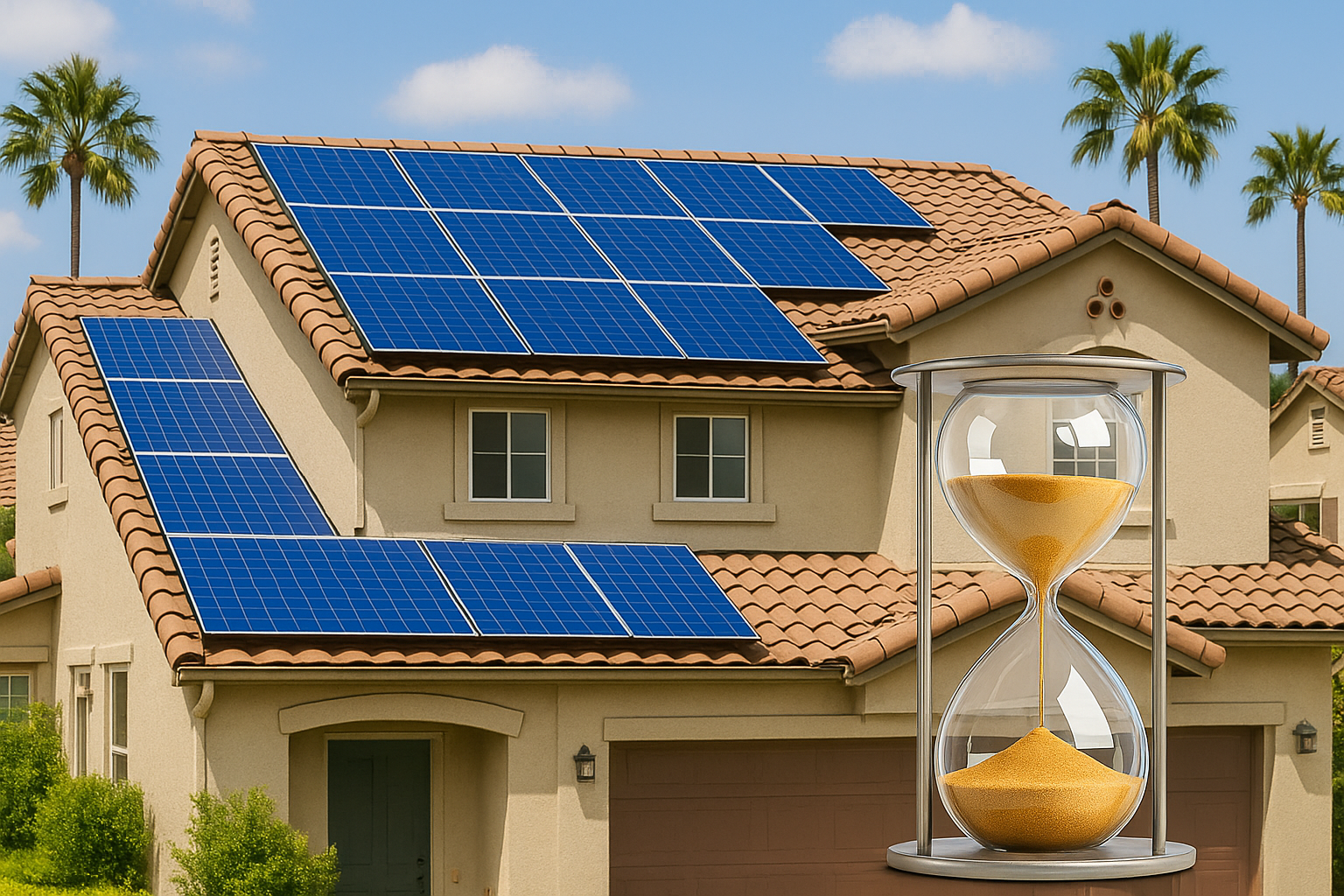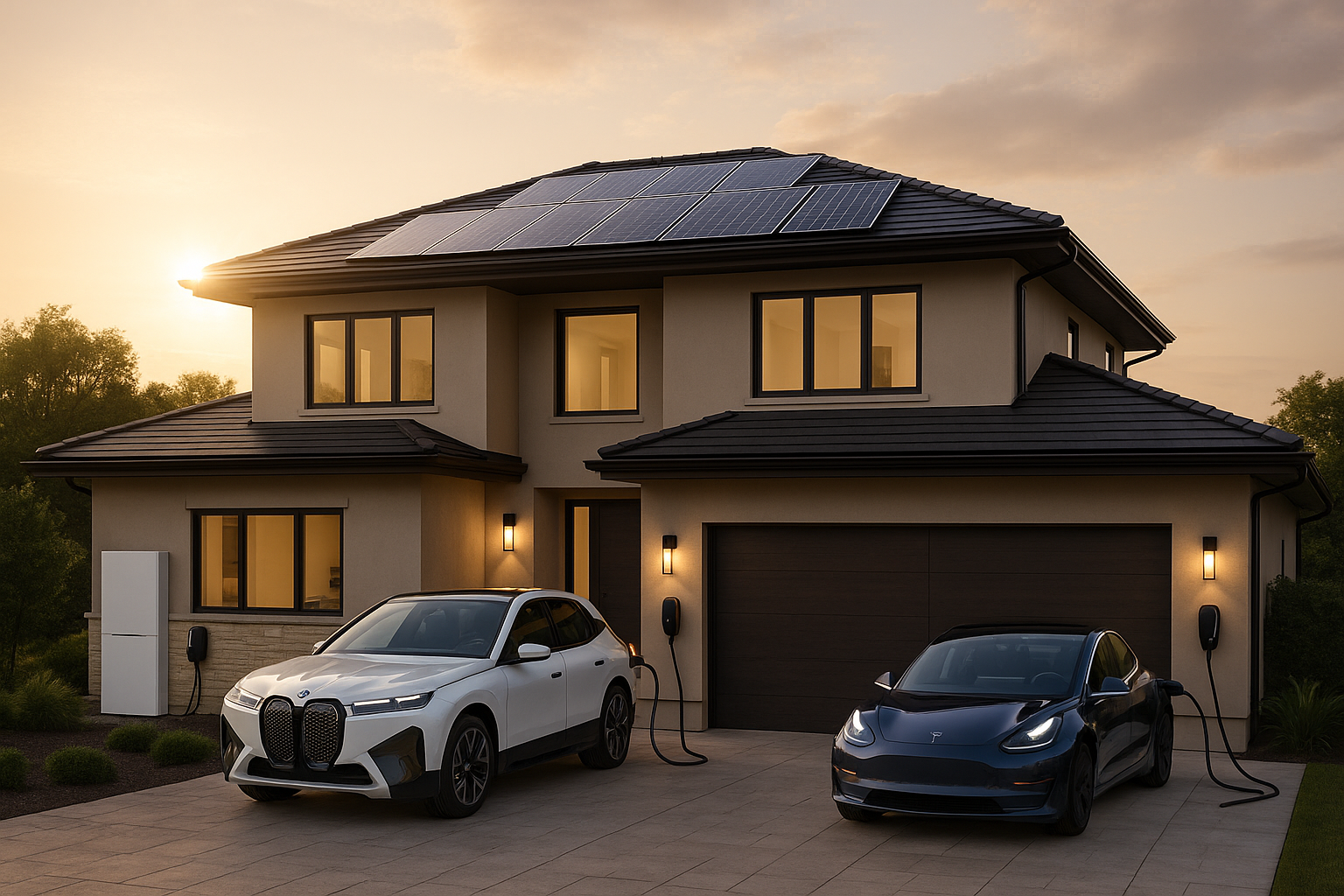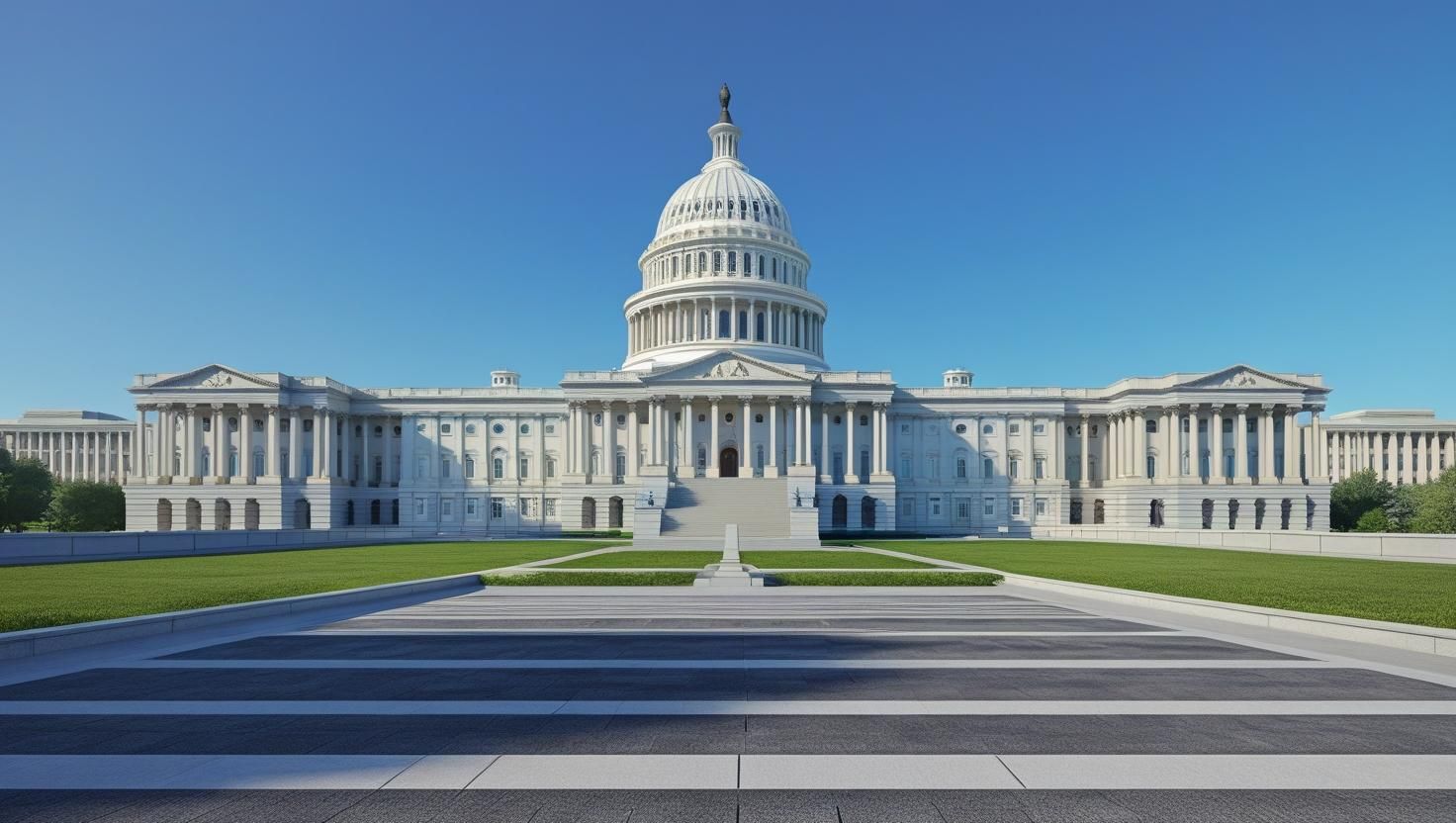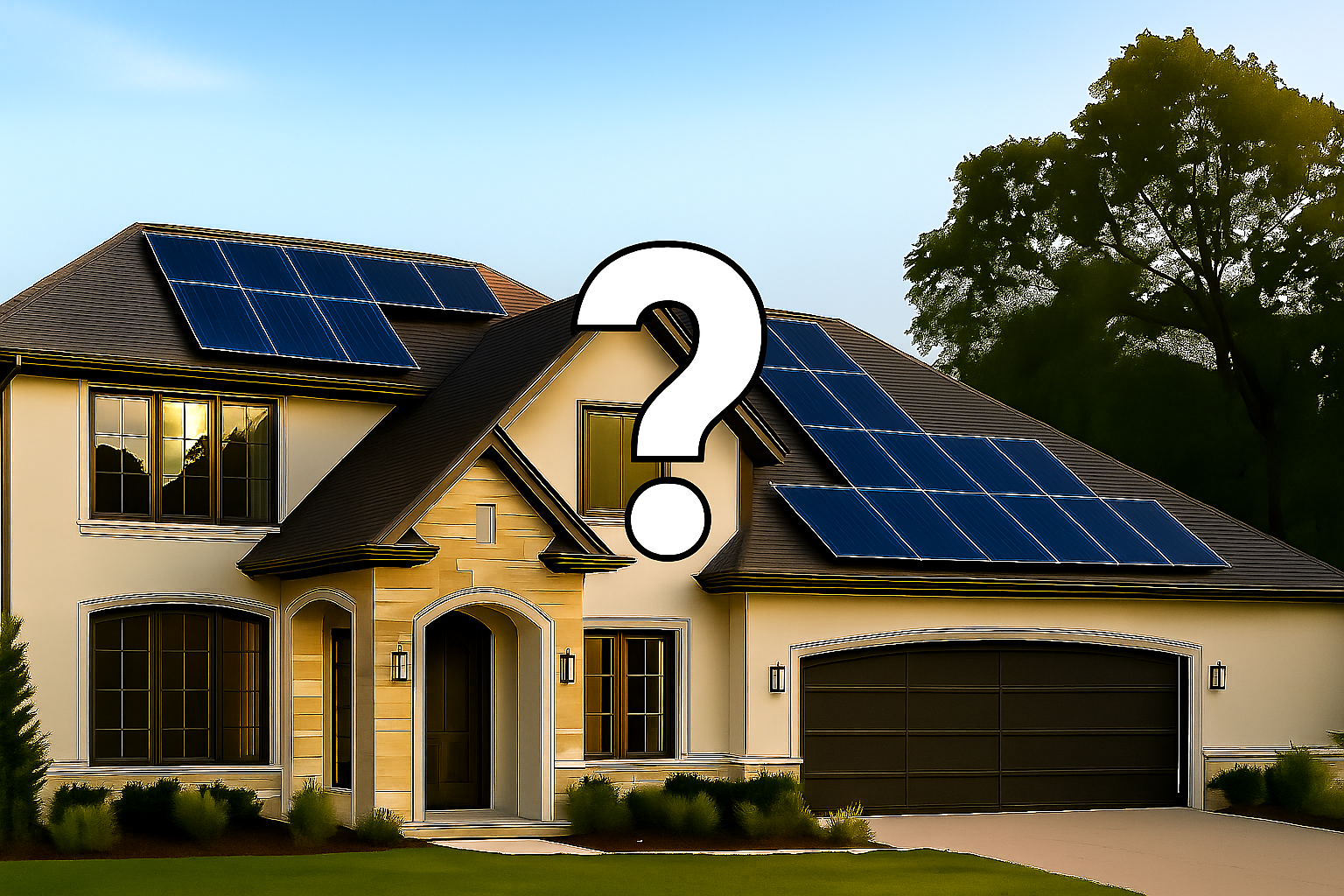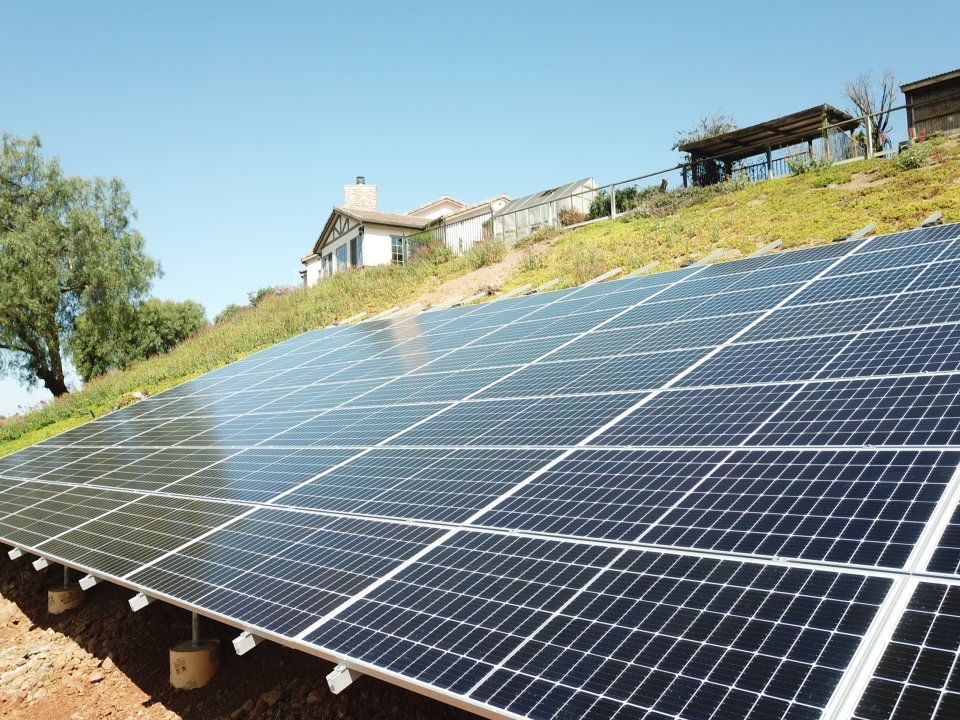The Solar Rush Is On: What You Need to Know Before the ITC Backlog Hits Southern California
Why Acting Now Could Be the Difference Between Big Savings and a Missed Opportunity
The final countdown is underway. As the end of 2025 approaches, San Diego homeowners are entering a critical window to lock in the 30% Federal Solar Tax Credit (ITC) before it expires. The push to go solar before the deadline has already begun—and with it, a wave of permitting delays, installer waitlists, and utility bottlenecks.
At Your Energy Pros, we’re seeing firsthand how demand is surging across Southern California, and we’re here to help you navigate it with clarity, confidence, and a custom plan designed around your long-term energy needs.
Why the Solar Rush Is Real—and Growing
As of mid-2025, there are just months left before the full 30% tax credit expires. This credit, part of the federal government’s effort to accelerate clean energy adoption, allows homeowners to claim 30% of the total cost of a solar energy system as a federal tax deduction.
That includes:
- Panels and inverters
- Mounting and racking equipment
- Battery storage systems
- Permitting, inspection, and installation costs
- Sales tax and supporting materials
But here's the catch:
To qualify, your solar system must be fully installed, inspected, and energized before December 31, 2025. And with demand rising, the timelines to complete these steps are already tightening.
How Backlogs Are Already Affecting San Diego Homeowners
Southern California is one of the most active solar markets in the nation. According to the California Energy Commission and SDG&E interconnection data, homeowners are submitting solar applications at record rates as they try to beat the ITC cutoff.
Common bottlenecks include:
- Permitting delays: Cities like San Diego, Chula Vista, and Escondido report permitting backlogs of 4–6 weeks or more.
- Installer availability: Trusted solar installers are booking out 6–10 weeks in advance.
- Utility interconnection: SDG&E processing times for Permission to Operate (PTO) approvals are increasing.
- Inspection slowdowns: With city staff managing a flood of end-of-year building permits, solar inspections may take longer than expected.
Even if you’re ready to go solar today, waiting too long to start can cost you your place in line.
The Real Risk: Missing the ITC Deadline by Day
Let’s break down the average timeline to install solar in San Diego County:
Step
Time Required
Free Energy Audit + Site Visit
1–5 days
System Design + Proposal Review
3–7 days
Permitting and HOA Approval
3–4 weeks
Installation Scheduling + Build
1–2 weeks
Final Inspection + PTO Approval
2–3 weeks
That means a system started today could take 6–10 weeks before it’s operational—and that’s without delays. If you wait until late fall to start the process, there’s a very real chance you won’t finish in time to receive the 30% credit.
What You Gain by Acting Now
When you start your solar journey with Your Energy Pros in the next few weeks, you’ll get more than just a tax credit. You’ll gain long-term energy independence, higher property value, and protection against California’s rising utility rates.
Financial Benefits of Going Solar in 2025:
- 30% federal tax credit on the full system cost
- SGIP rebates (up to $1,000/kWh) for battery storage
- California property tax exclusion for solar
- Net energy metering (NEM 3.0) for solar production credits
Energy & Lifestyle Benefits:
- Lower monthly energy bills for 25+ years
- Backup power during wildfires, outages, or PSPS events
- Increased home value and buyer appeal
- Clean energy independence and peace of mind
Step-by-Step: How to Stay Ahead of the Solar Rush
Here’s how we help homeowners fast-track their system without compromising quality:
Step 1: Book Your Free Energy Audit
Your Energy Pros starts with a comprehensive evaluation of your home’s energy usage, efficiency, and solar potential. This allows us to create a correctly-sized system that meets your goals.
Step 2: Custom System Design + Quote Review
We design your solar + battery storage system using real consumption data, roof mapping, and local weather patterns. Already have quotes? We’ll review them and identify any red flags or missing items.
Step 3: Handle Permitting and HOA Coordination
We manage the permitting and approval process with your local city or county and handle HOA documents if required—saving you time and hassle.
Step 4: Vetted Installer Selection + Project Management
As a vendor-neutral engineering firm, we match you with top-tier installers whose experience is ideally matched to your project. Our team oversees the entire process, ensuring your project stays on schedule.
Step 5: Post-Installation Support
Once your system is installed and active, we continue to support you with:
- Performance monitoring
- Maintenance guidance
- Optional enrollment in our Energy System Services Program (ESSP) for long-term savings and service
Don’t Settle for Rushed or Cookie-Cutter Systems
As demand increases, some companies may cut corners to move faster:
- Offering oversized or undersized systems
- Pushing high-margin equipment that’s not right for your needs
- Skipping crucial inspection or structural assessments
At Your Energy Pros, we operate from a consulting-first, engineering-driven perspective. We don’t profit from pushing panels—we succeed when your system performs long-term.
That means:
- No pressure sales tactics
- No rushed installs
- No proprietary-only product limits
Just clear, strategic guidance.
FAQs: What Homeowners Are Asking Right Now
Q: What’s the final date I can start solar and still get the ITC?
A: There’s no official “start” deadline—but based on current timelines,
we recommend starting no later than early
October 2025 to ensure completion before December 31.
Q: What if my system is installed but not energized by the deadline?
A: The IRS has historically required that systems be
placed in service by the deadline to qualify, which means fully installed and connected. Delays could disqualify you from the 30% tax credit.
Q: Can I still go solar next year if I miss the deadline?
A: Yes, but you will miss out on the 30% tax credit that expires at the end of this year, 2025.
Final Thoughts: The Best Time to Go Solar Is Before the Rush
The benefits of solar energy are clear—savings, independence, and sustainability. But the window to capture the full 30% Federal Tax Credit is rapidly closing.
If you’re serious about going solar, don’t wait for the end-of-year rush. The longer you delay, the more likely you are to face backlogs, reduced savings, and missed opportunities.
Let’s Get Started—Before the Backlog Starts Without You
Your Energy Pros offers Free Energy Audits for homeowners and businesses across San Diego County. We provide:
- Tailored solar + battery designs
- Unbiased quote reviews
- Full-service project management
- Long-term support for energy success
Act now to beat the rush and protect your chance to save 30% on your solar investment.
🕒 The Clock Is Ticking on the 30% Solar Tax Credit
Don’t let this opportunity slip away. With the Federal Solar Tax Credit potentially ending soon, now is the smartest time to act.
👉 Book Your Free Energy Audit Now
✅ No pressure. No sales tactics. Just expert advice.
📍 Serving San Diego homeowners with integrity from our office in La Mesa.
📞 Or Talk Live with an Energy Advisor to get your questions answered today.
Let’s make solar simple—and make sure you don’t leave money on the table.



